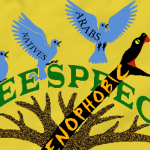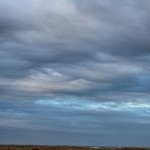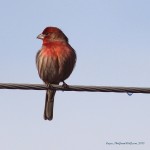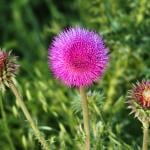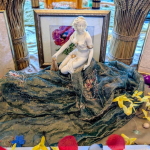Last weekend I participated in my first environment-based volunteer action in a few years. When I first moved to Oregon I did some tree planting around the Columbia River with watershed activists, but after that all my volunteer time went for requirements for my Master’s degree work, mostly social services volunteering. The past year I’ve been getting the hang of being self-employed as an artist and author full time, and it wasn’t until the festival season wound down earlier this month that I felt I had some breathing room. So the first free Saturday I had in months I found myself in work gloves and waist-high waders in McCarthy Creek, north of Portland. We hauled garbage (including six tires and a washing machine) out of the creekbed, and hacked away at invasive blackberry canes. It was hard, sweaty, muddy work, and by the time we were done I was exhausted and in dire need of a shower. But we’d done good work, and the sighting of a rough-skinned newt, unharmed but indignant at its tire shelter being removed, did much to raise my spirits besides. In fact, I was walking on air the rest of the weekend.

Speaking of hard work, the exercise was pretty good for me. Hauling tires out of a creek is a different sort of challenge than hiking ten miles, both physically and mentally. With hiking I move across the land, engaged in soft fascination. But the cleanup got me involved on a different level. I had to keep my eyes peeled both for blackberries and other invasives, and the accumulated garbage littering the ground beneath them. While I try not to touch things too much while hiking because I’m often on trails going through restoration areas and I want to leave a light footprint, here I was an active part of the restoration efforts themselves. So it was stimulating to both my senses and my mind, in addition to those good ol’ exercise endorphins coursing through my body.
Being with other people was another beneficial layer. I am an introvert, but this doesn’t mean that I’m antisocial. I do sometimes like being around people; it just tends to exhaust me quickly. And after a busy festival season dealing with hundreds, if not thousands, of new people almost every weekend, one would think that being around forty cleanup volunteers wouldn’t be much fun. On the contrary, the shared effort just made it that much better. We all participated in the hard work and the problem-solving, and we all got to celebrate a job well done at the end of the day. Somehow, having other people there just amplified the awesomeness, and not just because we got to say to each other “Hey, look at what we did!” Humans are social animals, and most of us do need a certain level of socialization in order to be healthy. Chalk it up to me indulging my mammalian group instincts, but I had the time of my life in a small crowd of other muddy people.
Finally, the whole experience contributed to my feeling like I was a part of something bigger–which is one of the main reasons for spirituality in the first place. Not only was I a part of that group, but also a part of the community benefiting from the watersheds of the Columbia River that links us. And, on a grander scale, I was being a part of the mass movement to undo the damage we’ve done to the environment. Even if I couldn’t reverse climate change all by myself, I could at least help keep that washing machine from rusting into the waterway more, and give native plants a boost by taking out invasive competitors. And as part of the global community, I was making efforts to improve the only planet we live on. If that couldn’t make me feel connected to something bigger than myself, then I don’t know what would.
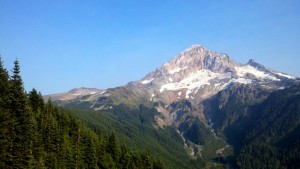
So it seems that my outdoor activities and the celebratory rituals of many pagans have quite a bit in common. I stopped observing sabbats years ago; formal celebratory ritual never really stuck, and it felt more like one of those things I “should” do as a pagan, as opposed to something I looked forward to and benefited from. But at Lammas I had my first solo overnight backpacking trip where I spent the night on top of a mountain with a minimum of supplies, and then got muddy while cleaning a creek for the Equinox. Neither of these was planned, but I think it’s a trend I’d like to consciously continue. My pagan spirituality has always been about nature, and it means a lot more to me to go out and actively engage with it than to spout chants about nature in the abstract at the appointed times of the year.
I know I’m not the only pagan who feels this way, either. I know “get outside!” has become something of a cliche when advising newbies (and others) of how to grow their spirituality. And it may seem like a no-brainer for me to celebrate the turn of the wheel by connecting to the world around me in the way that suits me best. After all, I pay close attention to the changes in nature around me all the time, from the maple trees outside my urban Portland apartment to my favorite hiking trails. But these always seemed special; I didn’t have to save them for an every-six-weeks-or-so occasion.
Still, I might recommend to others some more earthy, dirty outdoor time in conjunction with more formal, living-room-and-back-yard-and-park rituals. See what the effects are; I’m betting that a good number of you may find it augments and complements the more standard celebrations quite nicely. Are there any differences in the two experiences other than the obvious? What about parallels?






